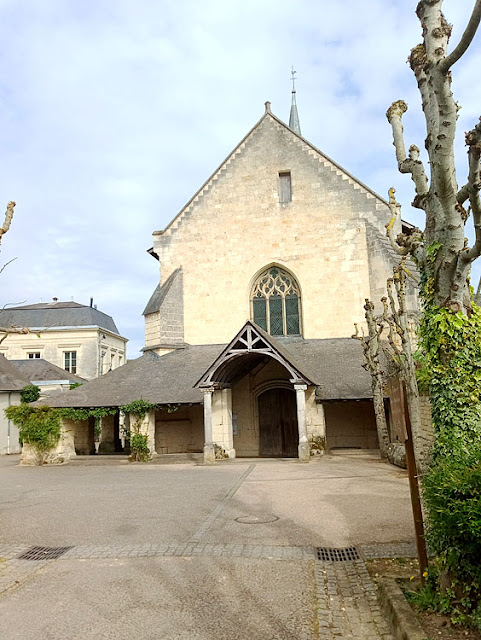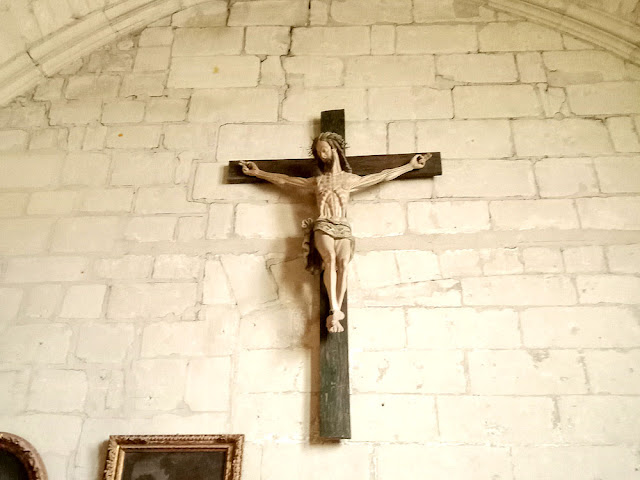 |
| The parish church of Fontevraud l'Abbaye village, outside the famous Abbey. |
The church of Saint Michel was built about 1170 at the request of the Abbess Audeburge of Fontevraud Abbey and paid for in
part by Henry II and his wife, Eleanor of Aquitaine. It is in the village, outside of the famous Abbey.
The most remarkable object in the parish church at Fontevraud is this polychrome wooden sculpture of Christ on the cross. It was carved in the 15th century but discovered in the attic of the presbytery in 1952. The body is tortured, but the face peaceful. His fingers are extended in a gesture of benefaction.
 |
| The Fontevraud parish church crucifix, which is in the village, not the Abbey. |
Compare it to this much cruder crucifix from Ligueil, with its agonised and despairing Christ who is nonetheless in the same tradition, and was also found tucked away out of sight in an attic.
The Ligueil pulpit crucifix is a piece of folk art. The artist and date are unknown, there was nothing written about it in the past, but it is clearly a piece of French heritage. The artist obviously felt free to express himself and the work does not fit any particular tradition.
 |
| The Ligueil crucifix. |
A pulpit crucifix is a liturgical object intended to hang on the wall of the nave of a church, opposite the pulpit. This one from Ligueil was probably made by an itinerant sculptor in the 16th or 17th century, perhaps copying a much older version judging by some archaic traits.
This sculpture was discovered about nine years ago in the roof space of the church
in Ligueil. It cannot always have been kept in this church and could
have come from one of the former churches in the town. It's not
documented, but it is likely that at some point prior to the Revolution
it was decided that the sculpture was too uncouth and it was replaced by
a more modern crucifix. This relegation would have enabled it to escape
the acts of vandalism that swept the region in 1784.
There is an old repair to the back, perhaps by a blacksmith, which is
testimony to long use and public affection for this object before its
banishment to the attic. Rich in meaning, highly individual yet at the
same time representative of rustic works which reveal the thinking of
the humble artists who carve wood. It is no wonder it was listed as an
historic monument in its own right in 2014.


No comments:
Post a Comment